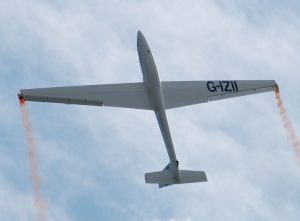
When most people think of airplanes, they envision large commercial airliners with two or four jet engines. There are many different types of airplanes. While some of them have jet engines or propeller engines, others don’t have any engines. Known as gliders, these unpowered aircraft rely strictly on their aerodynamic design and the atmospheric conditions to stay in the air.
#1) Also Known as Sailplanes
Gliders are also known as sailplanes. This is because, like sailboats, they don’t have engines. Gliders or sailplanes essentially sail through the air. They feature long wings that generate lift as air moves over and under them.
#2) Invented in the 1800s
Gliders have been around since the early to mid-1800s. They were originally pioneered by English aviator and engineer Sir George Cayley. Cayley’s design consisted of kite-shaped wings, a seat and an adjustable tail assembly. It was reportedly the first glider to successfully fly while carrying a person.
#3) Requires a Pilot License
Because they lack engines, some people assume that gliders don’t require a pilot license. Operating a glider in the United States, however, still requires a pilot license. The U.S. Federal Aviation Administration (FAA) requires glider pilots to obtain a dedicated glider license or a pilot license with a glider rating. Other countries and their respective aviation authorities require similar licenses to operate a glider.
#4) Pilots Use Atmospheric Conditions
Pilots of gliders often use atmospheric conditions to stay in the air. Mountains, for instance, often have wind streams that deflect upwards. Maneuvering a glider into these wind streams can provide an additional boost of lift. Fields and cities may also have columns of upward-moving warm air, which can provide a similar boost of lift for gliders.
#5) Pilots Consider the Glide Ratio
When operating a glider, pilots pay close attention to the glide ratio. The glide ratio represents the forward distance of a glider relative to its vertical descent. A glide ratio of 40:1, for instance, means that for every 40 meters a glider travels forward, it will descend 1 meter. Generally speaking, the higher the glide ratio, the better, as this allows gliders to stay in the air for a longer period.
#6) Versatile and Used for Many Purposes
Gliders are incredibly versatile. Some pilots use them for leisure and recreational purposes. Others use them to compete in shows or competitions. There are even gliders used for scientific research, such as tracking weather conditions or observing local wildlife.



